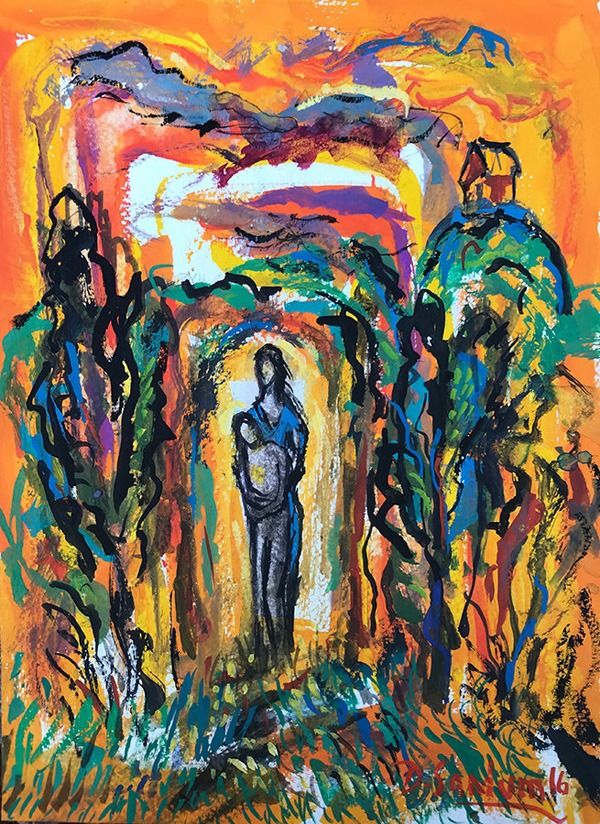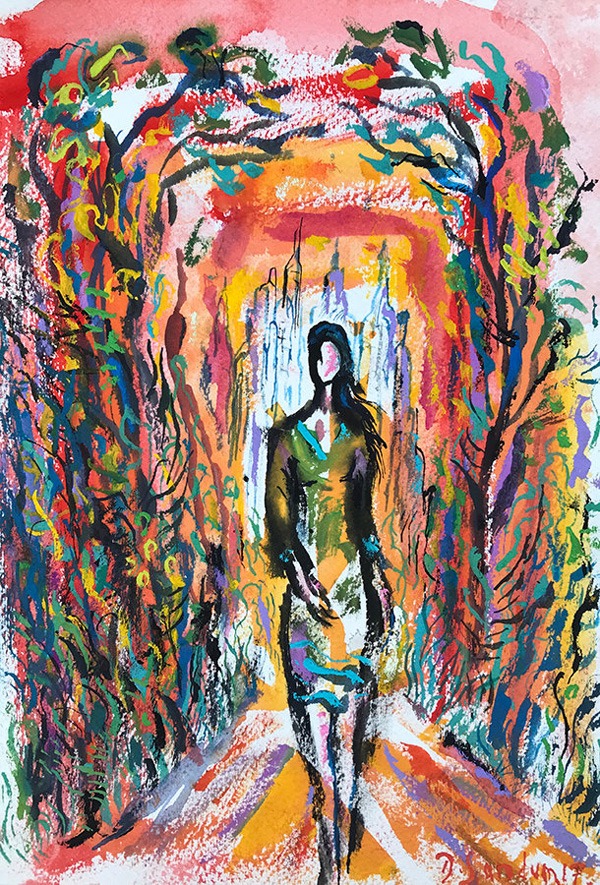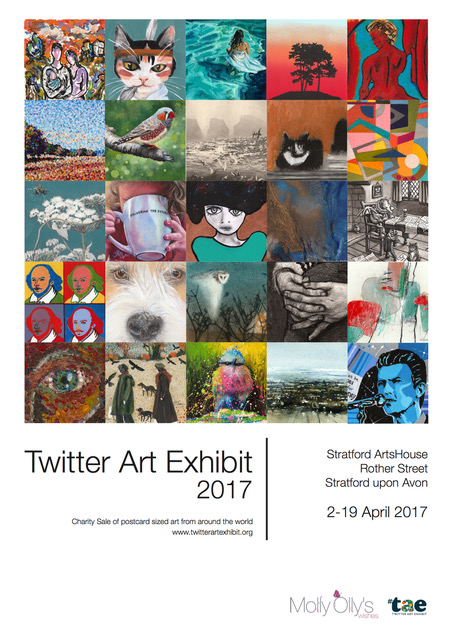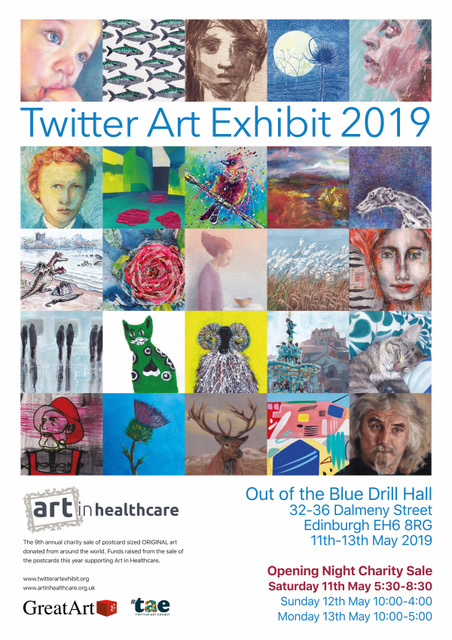Born and raised in Sweden, David Sandum moved with his wife to the United States in the early 1990s where he attended the University of Utah and graduated with a Bachelor of Arts in speech communication. It was not long after that David and his young family returned to Scandinavia, where he worked in IT sales. The pressures of his career, combined with many years of stress, took a toll on his well-being. After being diagnosed with depression, David began to draw and paint, inspired by Edvard Munch’s belief that everyone should write or paint their life story.
By 2002, David had his first exhibit in his new hometown of Moss, Norway. Inspired by this experience, he pursued a career in art. David’s choice of media to express his ideas are as varied as his works. For his etchings, David primarily uses aquatint, drypoint, and carborundum. When painting, he uses either oil on canvas or gouache on paper. The difference these techniques present are something that David enjoys. He is also an accomplished author, having written a memoir about his challenges with mental illness in the book “I’ll Run Till the Sun Goes Down: A Memoir about Depression and Discovering Art.”
In 2010, David earned international acclaim by founding the Twitter Art Exhibit, a social media initiative whereby artists from around the world send hand-painted postcards that are exhibited for local charities in need of funding. This annual event has gone global, taking place in locales such as Edinburgh, Scotland, Canberra, Australia and Los Angeles and New York City in the United States.
By Al Gord
David, it is such a pleasure being able to interview you. How did the concept of the Twitter Art Exhibit (TAE) first come to life and what was the motivation behind the concept?
It all started in 2010. At the time, a core group of artists from all over the world supported each other on twitter. We had often discussed exhibiting together, but we were not sure how. I then read an article in my local newspaper that funding had been cut for children’s books. Staring at my wall of inspiration in my studio—blue-tacked postcards that I had gathered over the years of inspirational artwork and artists, I got an idea. What if all my artist friends sent a hand painted postcard to my library and we sold them to raise funds for the books. The postcard size was small and cheap to send.
I asked for a meeting with the library Director and the rest is history. I titled the exhibit, “Twitter Art Exhibit—140 characters,” symbolic of the amount of characters allowed in a tweet. I also set a goal to get 140 cards. We received 260 cards from 24 countries and raised enough funds to buy 221 new children’s books. Then we simply continued the concept, one show a year, for other causes. Last year in South Carolina we received nearly 1000 cards from over 60 countries. The upcoming show in England will be exhibit number eleven.
For those not familiar with TAE it is unique in that it is not a juried exhibit and so any artist can participate. Can you tell us a little bit more about the show itself?
I am very proud of the fact that TAE is an “all-inclusive project.” Anyone can participate, professionals and amateurs alike. We have no theme or medium requirement; as long as the work is original and hand signed. The cost is the same for all cards. Some artists are famous, others are not. Each sent card is exhibited in a grid system along with a label of the name of the artist, their social media handle, and their city and country. I love how interactive TAE is. A buyer can take a photo with their card, post it on social media, and get in touch with the artist. Together the cards make an installation.
Each curator decides how to display them. The heart of TAE is our love for creativity and desire to help those in need. Looking at the exhibit walls, I am always touched by the collective energy of love they represent. The proceeds from sales are donated to the charities. I have witnessed the difference we make for the charities we support. Not just with funds, but also with appreciation for their efforts, media attention, and new volunteers. For the first exhibit, I came up with the slogan, “Through art we can change the world.” I have seen it happen.
I know that when I first started to share my work publicly I was very worried about public audience reception. What would you say to new artists or those who dabble in the arts but are nervous about having their work exhibited alongside experienced professional artists?
I understand that some are nervous about showing their work in public for the first time. But it is usually an emotion mixed with great excitement. If you have fears, feel the support of your fellow artists and remember the Ralph Waldo Emerson quote, “Every artist was first an amateur.” I would also consider that the goal is not to promote ourselves (though I love to hear stories of buyers connecting with artists), but to help the cause that we support. If you focus on their gratitude, it will help. Sales have little to do with good karma coming your way!
When you were ready to launch the first show back in 2010 what were your initial hopes and goals for show?
My goal was to exhibit with my artist friends, but mostly, to get the children their books. I had many wonderful memories of visiting my library as a child and I wanted to do everything possible to help. It was a huge project to run alone, and I must admit, that on many occasions, my sole goal was to make it happen, then hope for the best.
I am sure that the first exhibit is something that was incredibly memorable for you. What is your greatest memory of that initial event?
I recall the final night of hanging cards for the show. I had spent the entire day and night rearranging the cards on the five-sided wall in the middle of the library, donated by a large gallery. Exhausted and near midnight, I felt relieved it was finished. Then I froze in a strong emotional moment. Standing alone in silence, I marvelled at how beautiful the cards looked together. I had focused so much on each individual card that I had not noticed the collective force they represented. I have since heard, that many participating artists who attend an opening have the same reaction. When you see the collective gallery, you fully understand the heart of what we are doing.

How has TAE evolved over the years and is TAE in its current inception anything you could have imagined a decade ago?
In the beginning, TAE was simply a personal project to help my local community. After the second exhibit helping a local women’s shelter, I was approached by Nat George, a curator in Los Angeles who wanted to organize a TAE at a gallery in her city for a local cause. She was the brainchild that took us to another level. We created a board and developed further. Regarding the second part of your question: I guess the humble answer would be, “No, never.” But truth be told, I have always had the vision of carrying on. I have become addicted to helping causes and seeing the cards arrive each year.
The shows have taken place worldwide. How are the locales and the related charities chosen?
We never look at a map and say, “Let’s go there.” The most important aspect is to find a curator on the ground who can run such a massive project. Curating a TAE is no small feat, it requires a huge sacrifice of time. This person must also find an exhibit venue, and a local charity that he or she is passionate about. A proposal is then sent to the board, who selects which project to approve each year.
A lot of work goes into the show behind the scenes. What role do the curators plays in the exhibits and how does one become a curator for TAE?
I explained some of this in the previous question. But yes, the curator is the key player, organizing the local exhibit space and opening the event, scanning cards, and liaising with the charity and the TAE board. They must also decide how to manage the project. Some organize work groups, others work solo. In each step of the way, the TAE board assists and supports them. If anyone is interested in curating, or wishes to read more of what is required, please see “Host an Exhibit” on our website.
So many people play a role in TAE. Is there anyone you want to acknowledge for all of their efforts?
Oh yes! A huge thanks to each of our wonderful artists, who create such wonderful work for us in so many various mediums. To my fellow board members and their families, Catherine Salter-Smith in England, John Wilson in Scotland, and Carole Gray-Weihman in California. A hug to each TAE curator who have helped us in the past, today, and in the future. Gratitude to the gallery owners who render their spaces for events. I also wish to thank the charities for their efforts in helping us make each event successful. And not to forget, each person who buys a card. And lastly, to my wife Kjersti for her support over a decade. Boy, this feels like an Oscar speech!
Through TAE and your vision and leadership, many great charities have been helped. Do you have any singular moment or show that is most rewarding for you?
I have many wonderful memories. Two stand out: In 2012, when we helped the women’s shelter, I recall a dinner with the Director, who told me with tears what the funds had been used for. Each woman had been given a haircut and manicure, then they had chartered a bus and sent them with their children on a trip to Kristiansand Zoo. These were things they had never been able to afford before. In Orlando, Florida, 2014, we helped the Center for Contemporary Dance, helping children with Down Syndrome and Autism for dance classes. Having a brother with Down Syndrome, I was deeply moved when they performed at the opening to loud cheers. At the end, each dancer gave me a high five and a hug.
David, you alluded to some of the causes. Can you share with us other example of what the funds raised go towards.
The money raised by each Twitter Art Exhibit is used by a local charity chosen at the time the exhibit is announced. The very first one, in 2010 raised money to buy children books for a library in Moss, Norway. The upcoming show in 2021 will be used to support patients and families fighting blood cancer. In 2020 the money benefitted a charity for those with a disability and special needs to support them in attending art workshops. There was a similar theme when the Exhibit took place in Edinburgh in 2019 with the money being used to host Art Workshops for people referred to them for rehabilitation therapy. Each year the venue and the charity are carefully chosen.

Where do you see, or hope, that TAE is headed in the future?
One would think I would answer bigger and grander. But growth must also be sustained. If we are to survive, we must keep the interest of our participating artists, and be able to cover our own costs. We are trying our best to find sponsors. Growth can also alter things. TAE in my view has always been an underground artist initiative for good. We must stay true to our ideals, keep doing our thing, and not turn into something else. I focus on each year’s exhibit in the same way that I did with the first.
Are we able to get a hint as to where the 2022 Exhibit will take place?
This is a closely guarded secret. Each year, at the official opening of the show I make an announcement about the following year’s venue and the charity which will benefit. We will have to wait until next May in Cheltenham, England, to hear where it will be taking place next!
Is there any message that you want to leave our readers with?
If you have wondered if you can create art, please consider what Picasso said, “Every child is an artist. The problem is how to remain an artist once he grows up.” I believe that every person on Earth can create art, we just need to figure out how. Please consider creating an original postcard artwork and register for TAE. If you are a professional artist, we need you. If you simply love art, please consider buying a card through online sales or at an event.
It was an incredible pleasure interviewing David Sandum. Aside from being a talented artist he is using his gifts, his voice as a creative to help make a difference worldwide. What started out as a small show back in 2010 to raise money for the local library has now grown into a large scale global exhibit, raising funds for charities all over the world. This demonstrates how one person can make a difference. David lit the initial spark that has evolved and continues to give back to others.
This year marks the twelfth annual Twitter Art Exhibit. The show will be curated by Cat Salter Smith and will be hosted in Cheltenham, England. As with every exhibit, the show is not only meaningful to those who it helps, but to their families, the curators and to everyone who wants to play a role in helping others. This year LINC, The Leukaemia and Intensive Chemotherapy Fund which supports patients and families fighting blood cancer, is the chosen charity.
To learn more about the exhibit or to take part in this global art exhibition, readers can view the organization’s website and their social media pages: Twitter and Instagram.











Leave a Reply